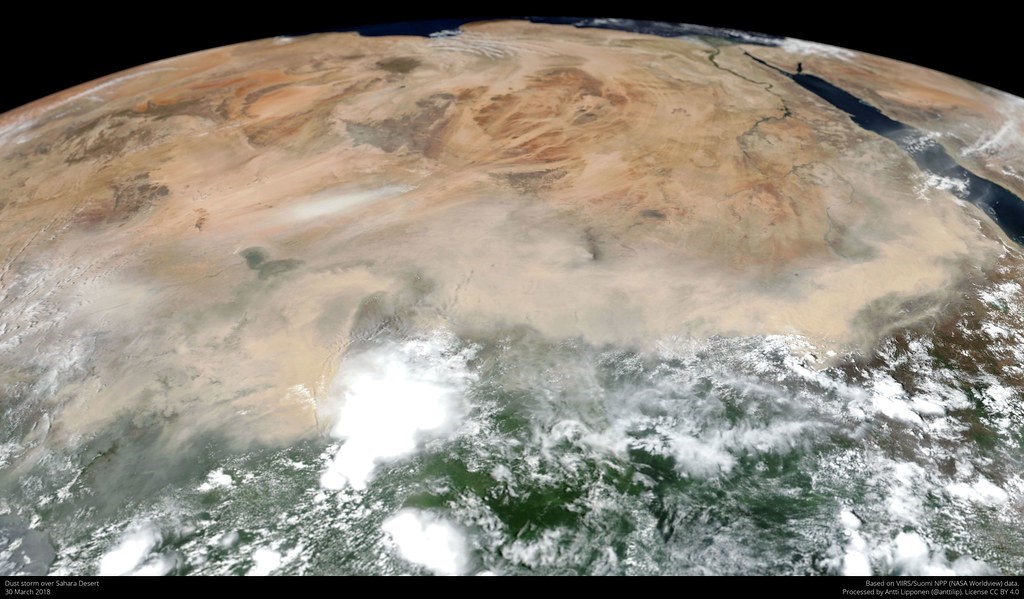
Assessing the habitability of planets beyond our own solar system is a critically important goal of planetary science and astrobiology. There are a significant number of studies that focus on bodies dominated by water because they have the highest likelihood of habitability. A recent study out of the University of Exeter in the United Kingdom led by Ian Boutle instead focuses on how the development of landforms and, in particular, mineral dust affect the potential habitability of a planet.
The study performed climate simulations comparing scenarios in which dust was present and able to react with atmospheric water and various forms of stellar radiation versus scenarios in which dust was not present and thus did not influence the development of the planet’s climate. These types of simulations were done for several planet/star combinations and orbital configurations with increasing fractions of areal coverage of land. The results of the simulations demonstrated that multiple driving forces are responsible for causing dust to migrate on a planet-wide scale. Furthermore, dust plays an important role in regulating the temperature of a planet’s surface. This, in turn, affects the amount of water vapor present and the width of potential habitable zones around stars. In particular, the results suggest that the presence of dust reduces water loss to space and therefore could extend the time and circumstellar region over which a planet is potentially habitable. The results also revealed that the presence of atmospheric dust likely obscures compositional information acquired via spectral analysis, including potential biomarkers such as ozone and methane. This has major implications for how researchers interpret data and make assessments regarding the potential habitability of exoplanets in future studies. READ MORE